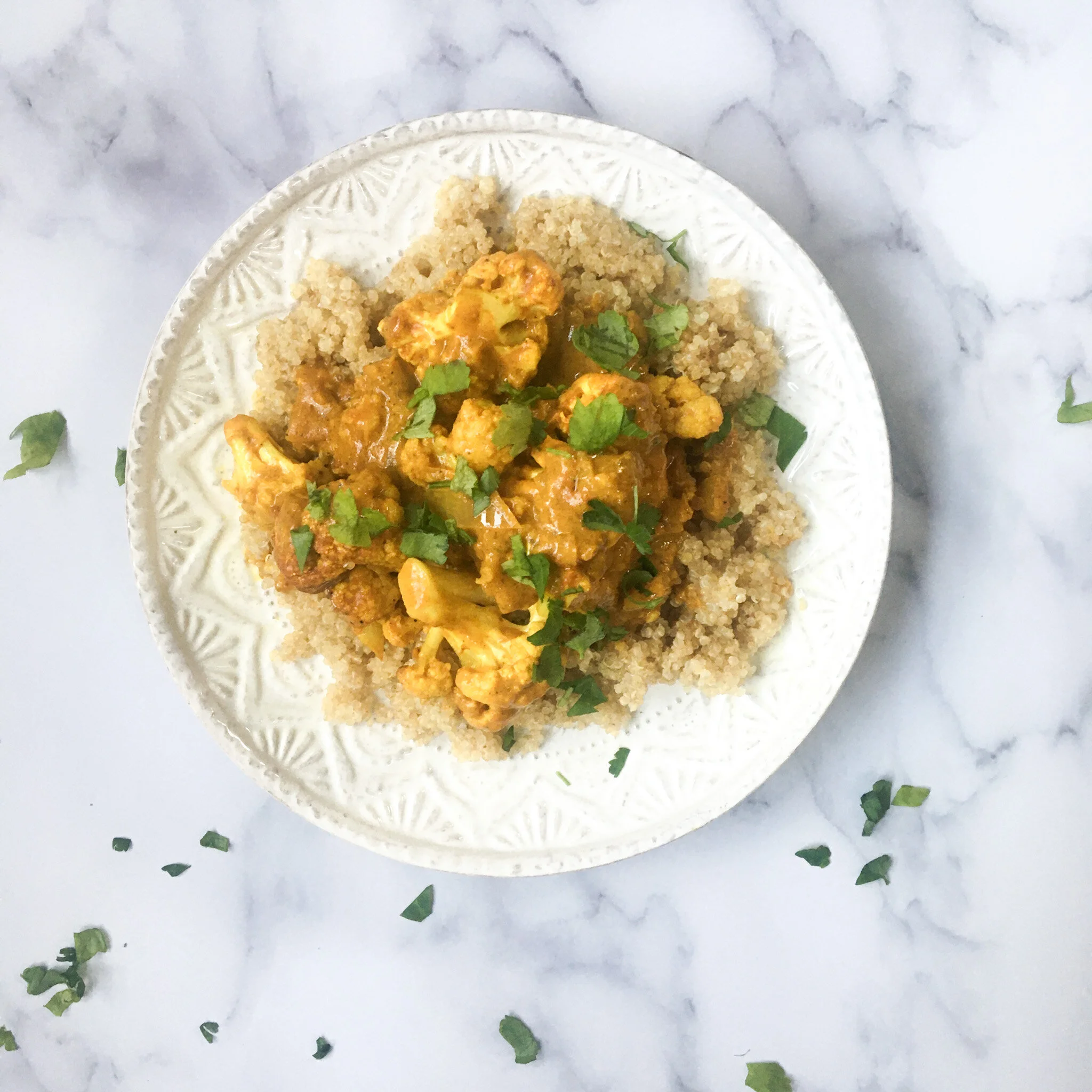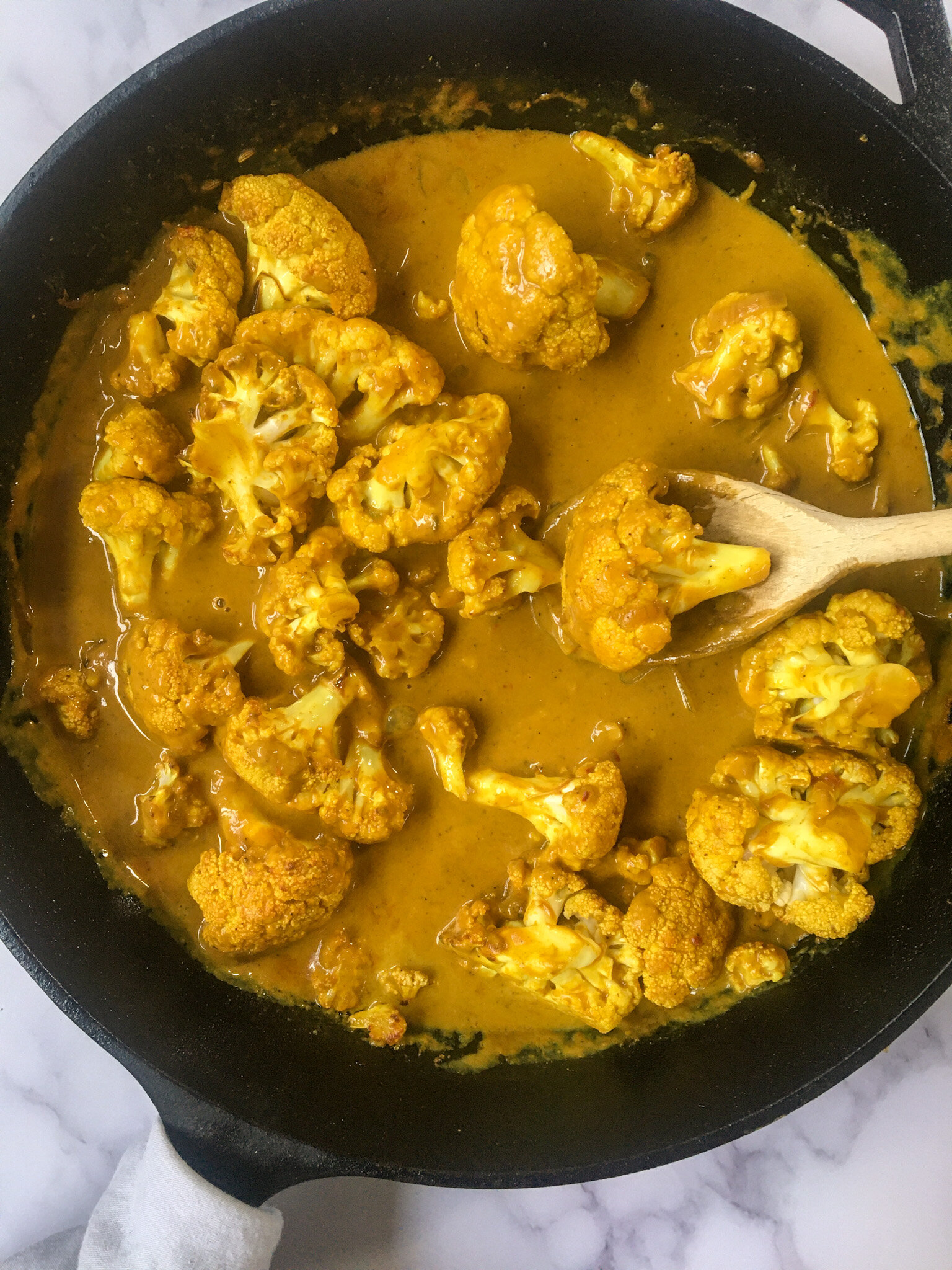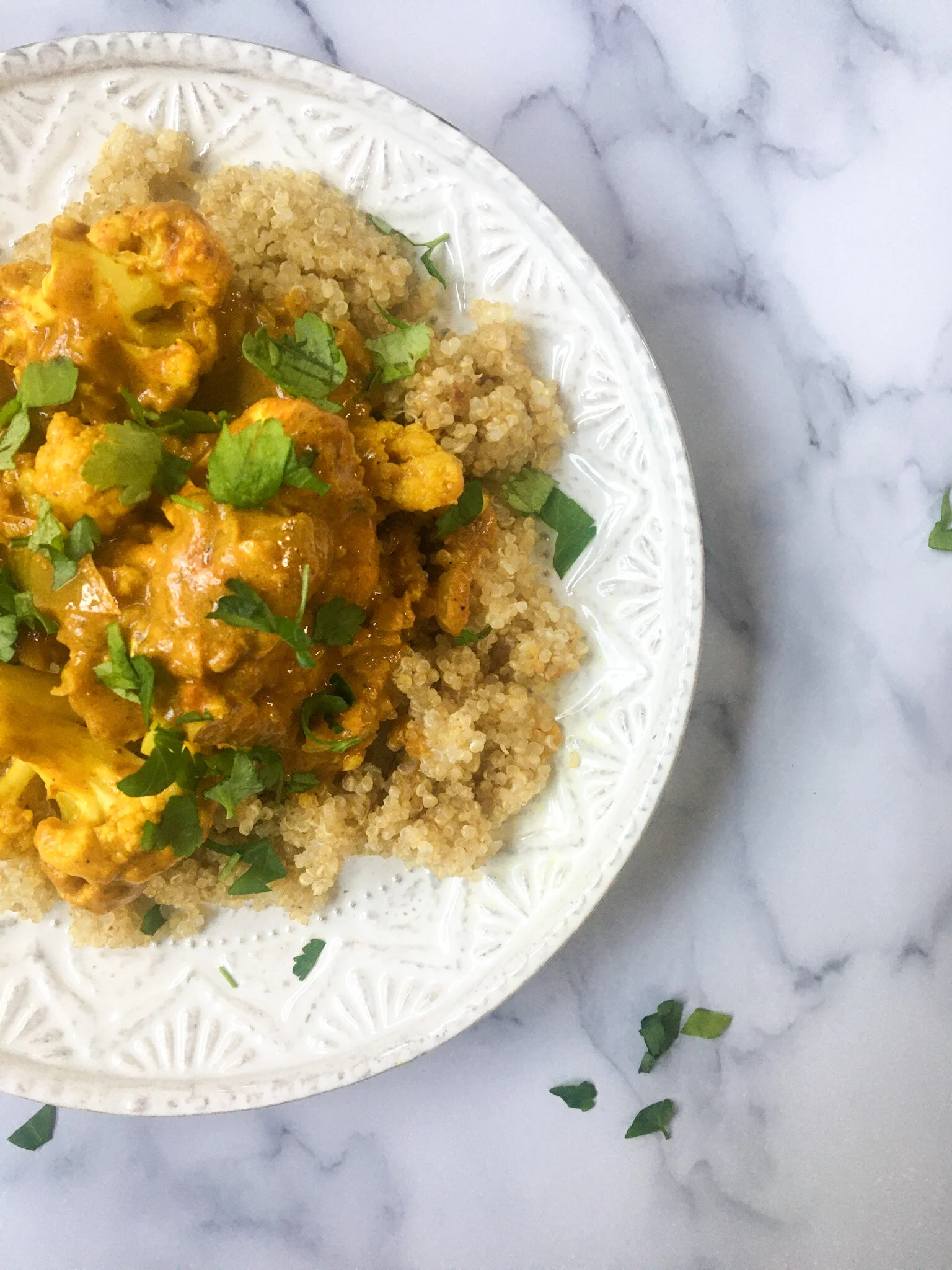How To Make Indian Cauliflower Curry
/Are you ready to fight inflammation and give your brain a healthy boost?
You may recall my recent blog post Why And How To Cook With Turmeric And Curcumin. I dug deep into the benefits of turmeric for your health. Now some of you may be loving the benefits of turmeric but are not so hip on its taste. Well, guess what?
When turmeric is mixed with other spices it can be superb. With this in mind, I’m sharing my “go to” Indian Cauliflower Curry Recipe so that you have your turmeric and love it too!
My Indian Curry Cauliflower recipe is a mix of My Go To Curry Blend and the cruciferous powerhouse, cauliflower. Cauliflower is truly a “Jack of All Trades”. Roast it with mixes of herbs and spices to take on their flavors, or add it to smoothie bowls, use as a pizza crust, whirl up cauliflower rice in your blender, or eat enjoy as a replacement for mashed potatoes.
Here are 13 ways to work raw cruciferous vegetables into your meals.
Why I Used Cauliflower
This recipe uses cauliflower so that you can get the powerful benefits of the bioactive Sulforaphane. Sulforaphane activates a factor called NrF2 which I also call a master activator. NrF2 engages genes that are instrumental in how we manage inflammation and oxidative stress.
Insider Look At Our Indian Cauliflower Recipe
At The Genomic Kitchen, we make recipes that are both delicious and have a purpose. We go beyond healthy to explain the why behind our ingredients and how they work in your body!
First things first! Cut the cauliflower and let it sit for 60 minutes prior to cooking. Why?
Because we’re after sulforaphane. You have to create sulforaphane because it does not naturally exist in cauliflower. You create it by chopping up cauliflower (or another crucifer) and letting cauliflower’s resident enzyme myrosinase interact with another compound in cauliflower called glucoraphanin. The meeting of the two produces sulforaphane.
Here's the twist and then the rule. Myrosinase needs time and no heat to produce sulforaphane. If you immediately chop your cauliflower and start cooking it right away, not only does myrosinase not have enough time to produce sulforaphane. , but cooking destroys this critical enzyme too! The end result, if you’re too hasty, you don’t get the gift of sulforaphane.
While the cauliflower is developing its sulforaphane magic, you quickly assemble a marinade and the final masala sauce so that the dish comes together seamlessly. Dunk the cauliflower in a marinade of coconut milk, garlic, and ginger for 10 minutes and then on to a quick broil to develop a distinct char flavor. The charred cauliflower is then coated indistinct char flavor before a final simmer in a beautiful spice-rich masala sauce which you put together during the broiling process and is ready and waiting.
While the cauliflower is marinating, blend the spices together of coriander, cumin, turmeric, black or yellow mustard seed, chili pepper flakes, fennel seed, garam masala, ground ginger, and black pepper to make the curry. These spices are warm and spicy but not overpowering in any way. Omit the chili pepper flakes if you have a low tolerance to spice.
To make the Masala sauce, we will combine the curry powder with liquid components. First, we want to add flavor to the sauce by sautéing shallot, ginger, and garlic. Once fragrant, you’ll add in the curry powder mix. We heat the curry powder for a minute or so to maximize the absorption of curcumin.
Next, you’ll combine the tomato paste and coconut milk and cook until fragrant. And voilà, a sauce is made! Simple right?
Once the sauce is complete, the cauliflower can be tossed and mixed in.
What To Grain To Serve The Curry With
My favorite grain to serve this with is quinoa because of the gene cross-talk.
Quinoa is a starchy seed that is often referred to as a grain. However, unlike other grains, it is gluten free, which makes quinoa easily digestible and alkaline-forming. It contains 20 percent protein and other nutrients such as manganese, phosphorus, magnesium, thiamine, and folate. It also contains all 9 essential amino acids and is a good source of dietary fiber. All of which support the work of proteins in the body.
Vitamins and minerals are crucial cofactors or support elements for protein. Just like construction workers need tools to work with, protein needs vitamins and minerals to support their work.
Quinoa is considered a super food in the Genomic Kitchen Toolbox. Our super foods contain a large number of vitamins and minerals each time you take a bite.
Mixing Things Up: Whole Grains Swaps!
Don’t like quinoa? Try replacing the quinoa with rice, sweet potatoes, or naan.
Rice can be used instead of quinoa to add a nutty, earthy flavor to your Indian cauliflower curry recipe.
On To The Recipe
30-minute Indian Curry Cauliflower
INGREDIENTS
For the cauliflower marinade
1 large head cauliflower, cut into florets (thick stem discarded)
⅓ cup of full-fat coconut milk
2 cloves of garlic, chopped or minced
1 tablespoon ginger, peeled and grated
Sea salt
Curry powder Blend
¼ tsp black pepper
1/2 tablespoon garam masala
1/2 tablespoon coriander seed
1/2 tablespoon cumin seed
1/2 tablespoon turmeric
1/4 tablespoon black mustard seed (you can use yellow if you cannot find black)
1/8 tablespoon red chili pepper flakes
1/4 tablespoon fennel seed
Sauce Ingredients
2-4 tablespoons coconut or avocado oil
2 cups canned full fat coconut milk
1 shallot, minced
3 cloves garlic, minced
1-inch fresh ginger, grated or chopped
1 can (6 ounce) tomato paste
1/2 tablespoon honey
To Serve
1/4 cup fresh cilantro, roughly chopped
steamed quinoa or rice, sweet potatoes, or naan, for serving
DIRECTIONS
1. Preheat the broiler to high. Line a baking sheet with parchment.
2. In a large bowl, combine the cauliflower, 1/3 cup coconut milk, 2 cloves chopped garlic, 1 tablespoon grated ginger, and a pinch of salt. Let sit 10 minutes to "marinate".
3. Spread the cauliflower in an even layer on the prepared baking sheet. Transfer to the oven and broil for 3-4 minutes, until the cauliflower is just beginning to char on the edges.
4. Meanwhile, make the curry powder blend, mixing the curry ingredients together.
5. In a large skillet over medium heat and add the coconut or avocado oil. Add the shallot and cook 5 minutes or until fragrant, turning frequently to prevent browning. Add the remaining garlic and ginger, and cook another 5 minutes. Stir in the curry blend and cook until fragrant, about 1 minute.
6. Add the tomato paste and the remaining 2 cups of coconut milk. Stir to combine, then bring the sauce to a boil and cook 5 minutes or until the sauce thickens slightly. If the sauce seems thick, thin with 1/2 to 1/2 additional coconut milk or water.
7. Add the cauliflower and any juices on the pan and cook, stirring occasionally, until the sauce thickens slightly, about 5 minutes. Remove from the heat and garnish with cilantro before serving.
5. Serve the cauliflower and sauce over bowls of quinoa, rice, potatoes, or naan. Enjoy!
What To Do Now
If you didn’t do so already, download our QuickStart Guide to learn how to get started or
Sign up for one of our online cooking courses specifically for health experts or chefs.
If you like this recipe, take a picture of your meal and tag @genomickitchen and on Instagram.
Want to try a different cauliflower recipe? We enjoy these Cauliflower Buffalo Bites.






